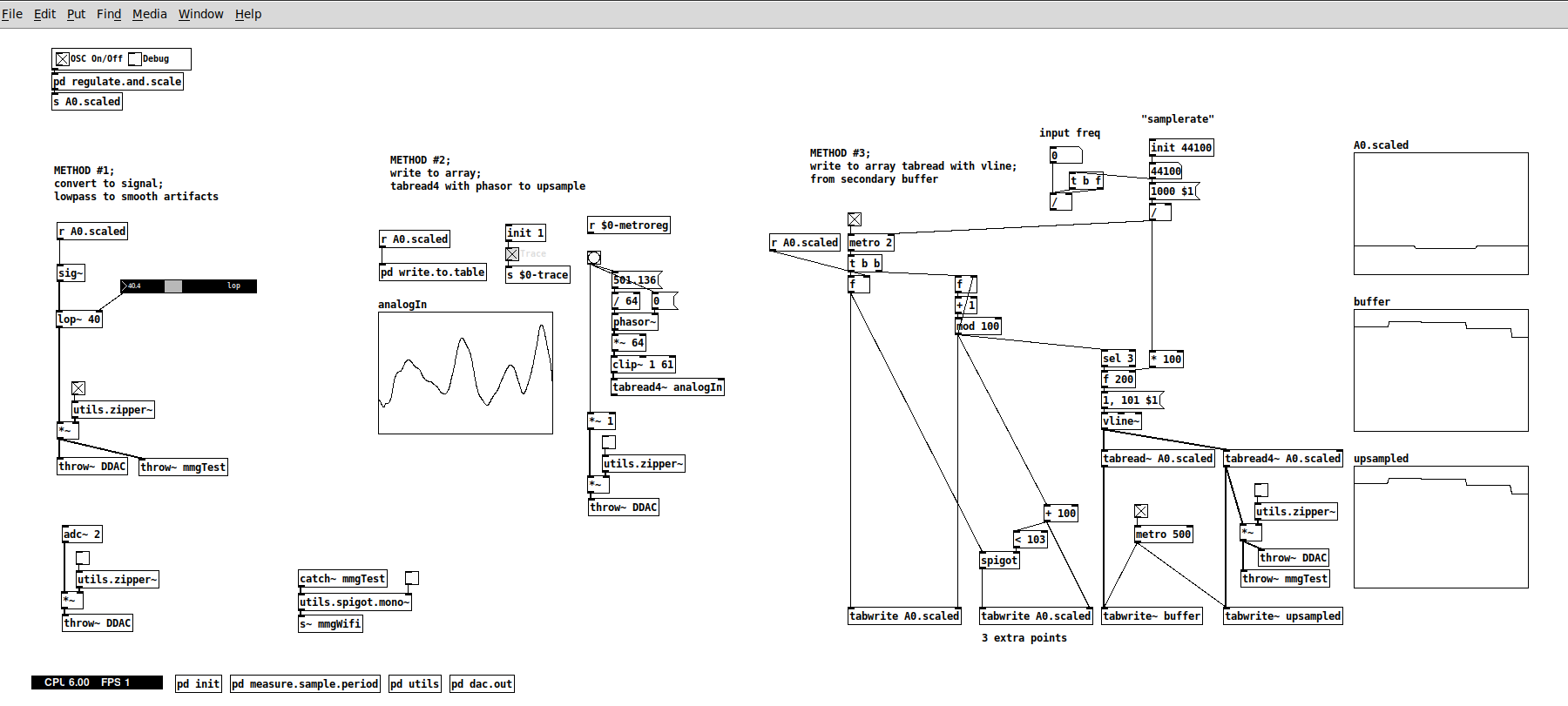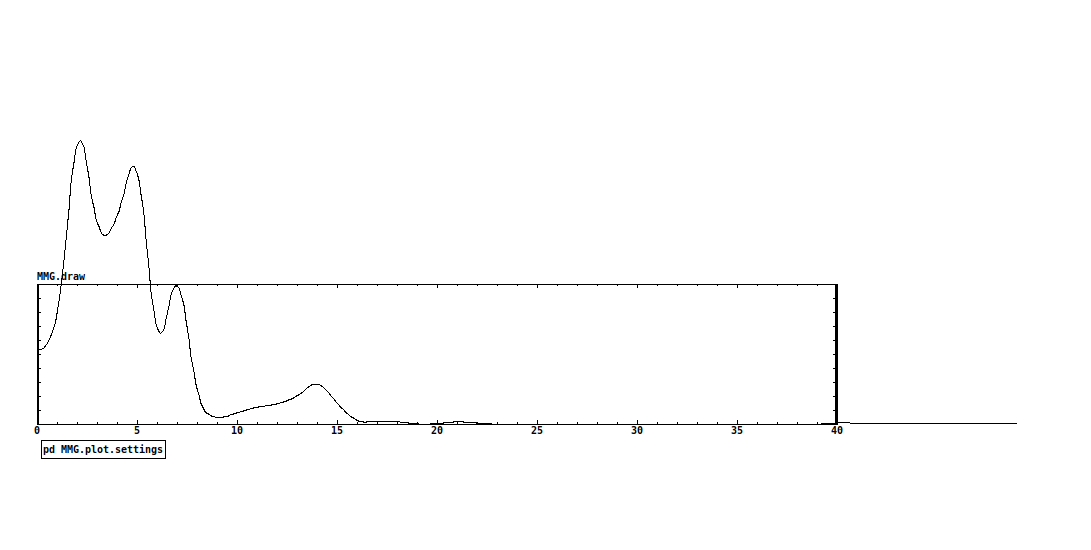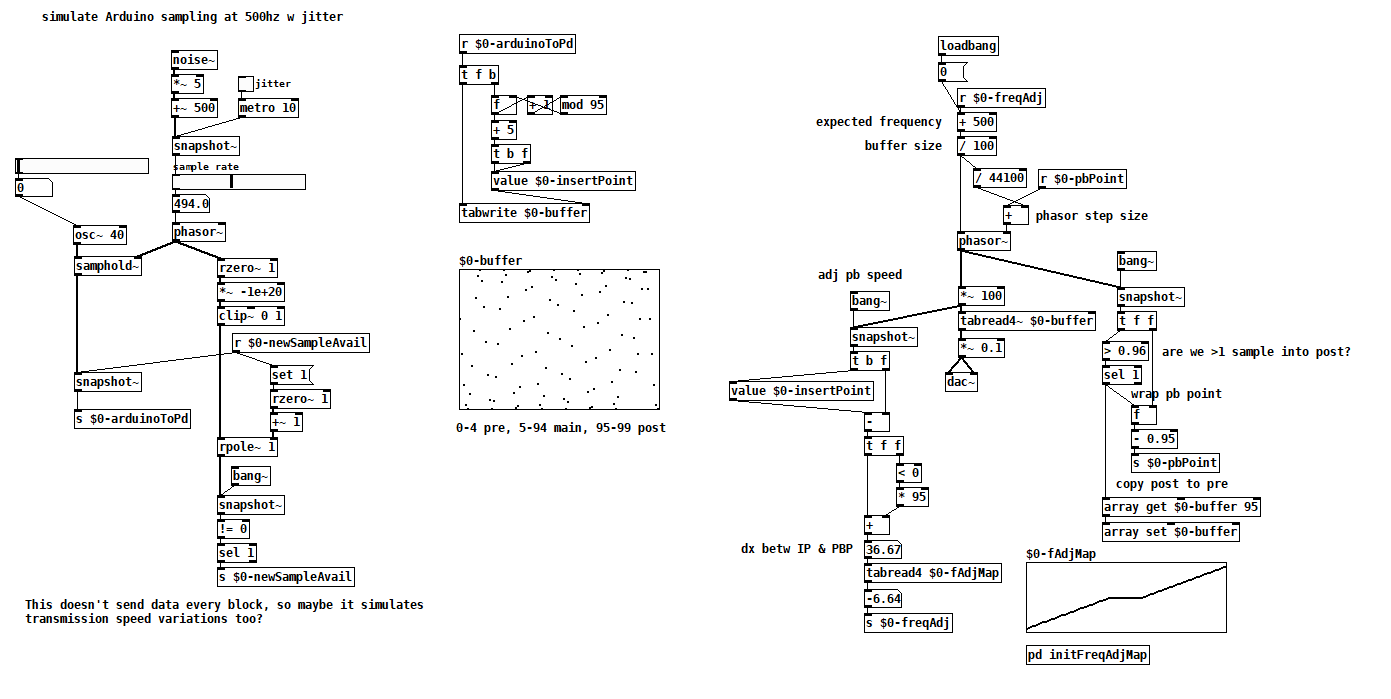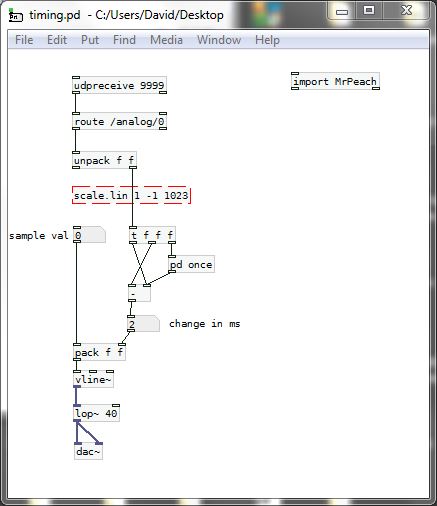@MarcoDonnarumma Just had a cursory look at you video.... very good.
So you will understand more musical tech terms.
With your low sample rate the steps in the waveform are massive. The result is approximately what you would ask of a "fuzz" box.
Your ears only hear the rapid changes where the waveform rises or falls vertically. Your brain can only interpret the audio that way as it gets no intermediate information.
A rapid rise or fall like those you see in the scope are..... because the signal rate is now (after [sig~] ) 44100 samples per second..... actually a very high frequency signal....... one half (the left or right half) of a 22KHz "note".
Usually called "aliasing"...... they are there because there was no information before or after to give the real analogue slope of the wave before it was sampled.
For CD audio the rate is also 44100Hz. The Nyquist is 22050Hz and a low pass filter in the DAC removes everything above 20000Hz so as to remove such artefacts.
Putting a [lop] will smooth out those steps and approximate the original waveform as it was originally sampled. The downside is that you will no longer hear the audio because it is likely outside the range of most peoples hearing (in this case only!.... with audio below 40Hz..... if it was a 200Hz note you would hear it).
If you put a [lop~] (between [sig~] and [dac~] with a fader connected to its right inlet with a range of say 0.3 to 40 you can play with the fader to get an audible signal that is close to what you want to hear.
A sort of "depth of fuzz".
You might need a slightly different range on the fader..... 0.1 to 25 or something.
Looking at your video....... seeing (yes, ok, hearing) that you need audible sound.... not 192KHz audiophile sound.... and bearing in mind the original 40Hz analogue signal is inaudible to a lot of people, I don't think the clock problem is going to have a significant effect.
But if you are mistaken about the 40Hz maximum and there is actually more information that you need....... think heartbeat (low) + blood rushing (high) then upping your sample rate from the arduino will be necessary to get the higher frequencies.
500Hz sample rate will only give you up to 250Hz of audio information, just like 44100Hz only renders 22050Hz for our delectation.
David.
P.S. I don't much like maths..... not true..... it is fascinating but too hard for my feeble brain.
But without bothering to work it out, in theory, to preserve the signal the [lop] should be just below half the nyquist... so for 500Hz sampling a [lop~ 240]  ?? should do that.
?? should do that.
So I was way off base with the [lop~] values I posted above.
The signal would be very reduced (much lower I think) with the values I gave above.
However, [lop~] is not a very "sharp" filter... low dB/octave...... so maybe I was not in fact wrong...... and anyway you will need some distortion so as to properly hear your 40Hz note.
I hope you like to have someone struggling alongside you while you work.
I have to research what that means when the signal has already been oversampled by [sig~]..... but I think it doesn't matter.
Someone clever will tell us first no doubt.
@jameslo 's solution above should give a better outcome though than with a rather uncertain value for [lop~].
It will depend on what you need from your patch.


 see it now
see it now


 ?? should do that.
?? should do that.



 . Here's a simulation of the Arduino with a slightly different clock speed, sample jitter and irregular transmission intervals. The Pd patch uses a 95 sample circular buffer and arranges for the playback point to dynamically chase the insertion point. See what you think.
. Here's a simulation of the Arduino with a slightly different clock speed, sample jitter and irregular transmission intervals. The Pd patch uses a 95 sample circular buffer and arranges for the playback point to dynamically chase the insertion point. See what you think.


